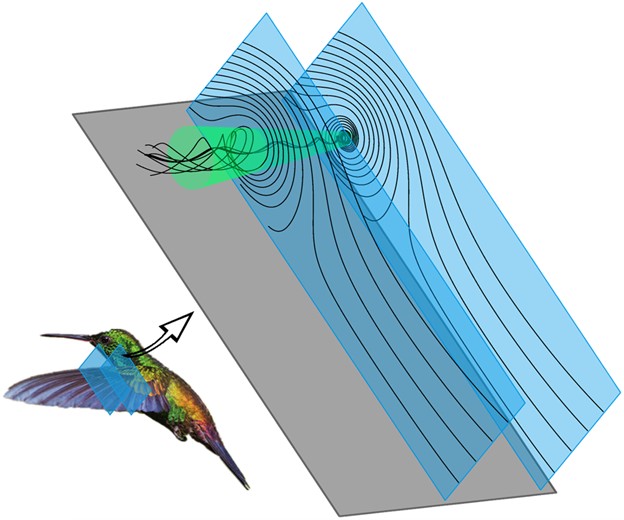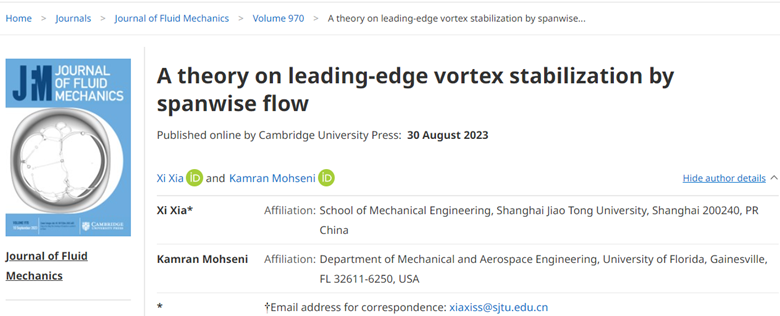
News

News
Natural flyers, like insects and birds, can generate excess lift via flapping wing motion, thereby achieving unrivaled maneuverability. T. Maxworthy and C.P. Ellington were among the earliest scholars who attributed the superior aerodynamic performance to a leading-edge vortex resulting from flapping, which had demonstrated an enhanced stability compared to that of a fixed wing. The high lift is a simple outcome of the leading-edge vortex lingering above the wing for a longer duration, when both the vortex circulation and lift generation are at high levels.

Naturally, an intriguing question to ask is how the leading-edge vortex becomes stable? Professor T. Maxworthy was the first to propose the conjecture of a spanwise flow along the leading-edge vortex axis, which bleeds vorticity from the vortex core to the wing tip, thereby preventing the excessive growth of circulation and the subsequent vortex shedding. However, this explanation does not answer why the leading-vortex is dynamically stable, meaning that there exists a stagnation in vortex convection and shedding.
Dr. Xi Xia from School of Mechanical Engineering at Shanghai Jiao Tong University has been working on this problem for over a decade. “The problem is intrinsically a stability problem involving vortex motion, and there must exist a simple potential flow model accounting for the dynamical system,” says Dr. Xia. Inspired by the physical picture that a spanwise flow has a finite cross-section area, he proposed a finite-area sink model instead of the classical point sink to represent the spanwise flow. This mathematical trick enabled the de-singularization of the induced velocity of a point sink, thus allowing the attraction of the leading-edge vortex to the spanwise flow being fully resolved by the model. The subsequent stability analysis resulted in a stable spiral-sink type of equilibrium, which gives the first mathematical evidence supporting LEV stabilization by spanwise flow.

This work has been recently published in Journal of Fluid Mechanics (Rapids) and has already attracted numerous attention. As commented by one reviewer, “this work will not only provide supporting evidence for the important aerodynamic mechanism behind flapping-wing flight but will also open up possibilities to apply this novel approach to several other questions dealing with the stability of flow structures.”
Paper Link: https://doi.org/10.1017/jfm.2023.613

Shanghai Jiao Tong University
Address: 800 Dongchuan Road, Shanghai
200240